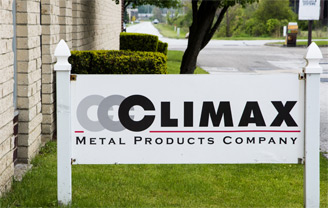Shaft Collars: Application Training
Want to learn a little more about Shaft Collars?
View the following presentation outlining the different shaft collar types, materials used, and applications shaft collars are commonly found in.
Rigid Couplings: Application Training
Want to learn a little more about Rigid Couplings?
View the following presentation outlining the different rigid coupling types, materials used, and applications rigid couplings are commonly found in.
Keyless Locking Devices: Application Training
Want to learn a little more about Keyless Locking Devices?
View the following presentation outlining what a Keyless Locking Device is, how it works, and how a KLD can provide the solution for your toughest problem.
Mounted Bearings: Application Training
Want to learn a little more about Light Duty Mounted Bearings?
View the following presentation outlining the different type of bearings, materials used, and applications where mounted bearings are commonly found in.
Abrasive Hardware: Application Training
Want to learn a little more about Abrasives & Abrasive Hardware?
View the following presentation outlining the different types of abrasive hardware, materials used, and applications where abrasives are commonly used.
Need technical information for our shaft collars or rigid couplings?
Our Customer Service Representatives are available during the week from 8:00am to 5:00pm EST.
When you have a question and we aren’t available, our catalog Technical Information pages often have the answers you are looking for.
If you need something else please contact us during our open hours, leave us a message at sales@climaxmetal.com, or message us through our chat.
What is a shaft collar?
Shaft Collars have extremely diverse applications. Shaft collars are used on applications from holding up a flag on a flag pole, to positioning devices on medical equipment to the more common industrial applications of holding other shaft components such as bearings, sprockets and pulleys in place. In general, shaft collar applications fall into one of three broad categories:
Positioners: Locate or position components on a shaft.
Spacers: Keep components “spaced” apart.
Limiters: Limit the movement of a shaft such as in a reciprocating application.
For more information check out the following: Shaft Collars Infographic.
What is a rigid coupling?
Shaft Couplings serve as components to time, join, or align shafts at lower speeds and torque, especially when zero backlash is desired. They are not intended for use as a critical part of a drive line or as a substitute for flexible or universal joints or other power transmission devices. Rigid couplings are designed for aligned shafts only, and are the most basic but often the most cost-effective coupling.
For more information check out the following: Rigid Couplings Infographic:
What types of shaft collars does Climax manufacture?
Climax manufactures set screw collars and clamping collars. We also customize dimensions, add keyways, offer balanced collars, provide specialized plating, and manufacture from a variety of materials.
Set Screw Collars are the most commonly used and cost effective shaft collars. The holding power of a set screw collar is provided by the impingement of the screw into the shaft. Lightweight styles are available (more…)
What materials are used in the manufacturing of Climax shaft collars?
Steel Collars are the most commonly used and manufactured. The exact type of steel used varies depending on the machine process but generally low-carbon steel is used, including materials such as 1215, 1045, and 1026.
Stainless Steel Collars are used primarily in applications (more…)










